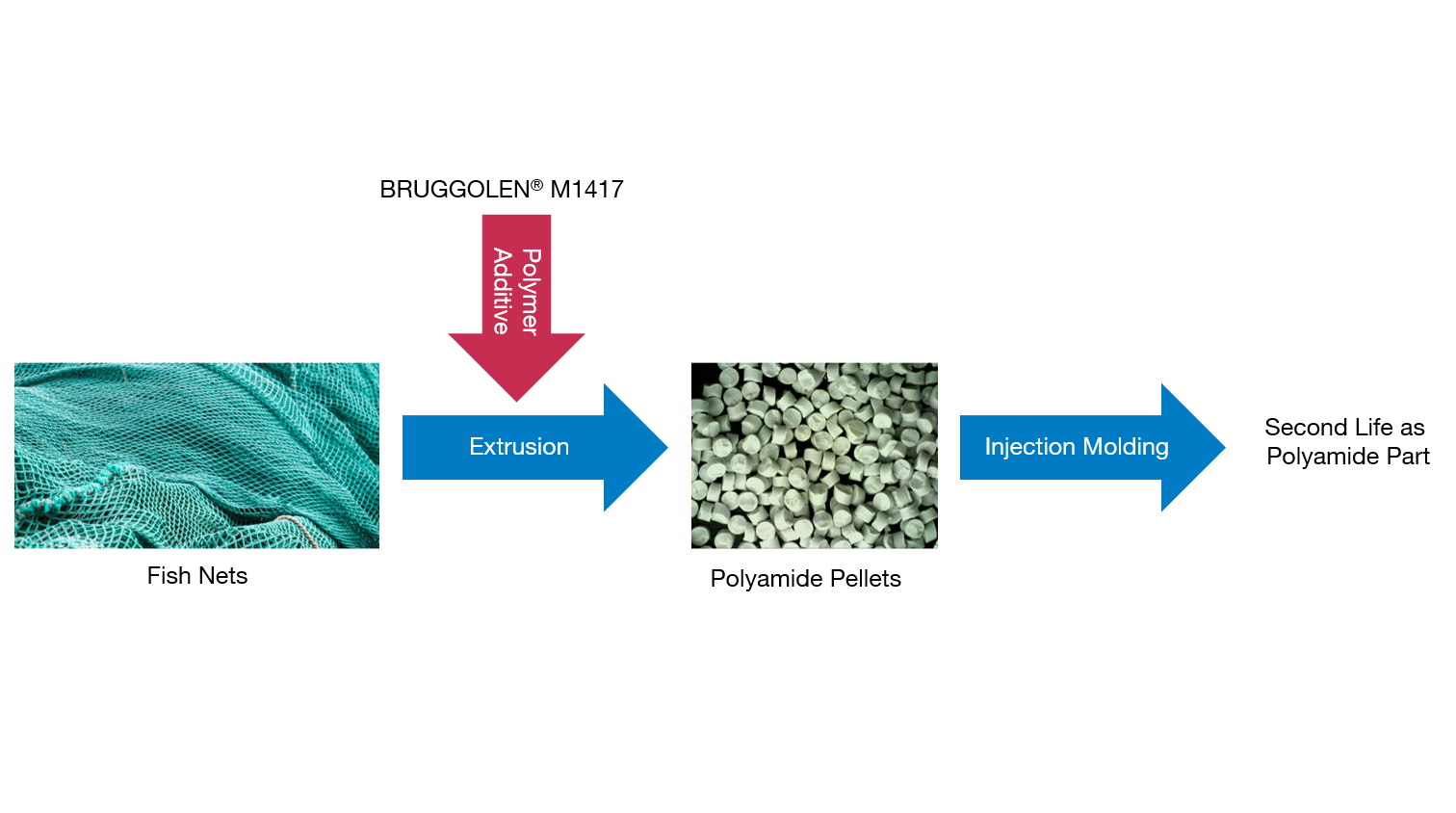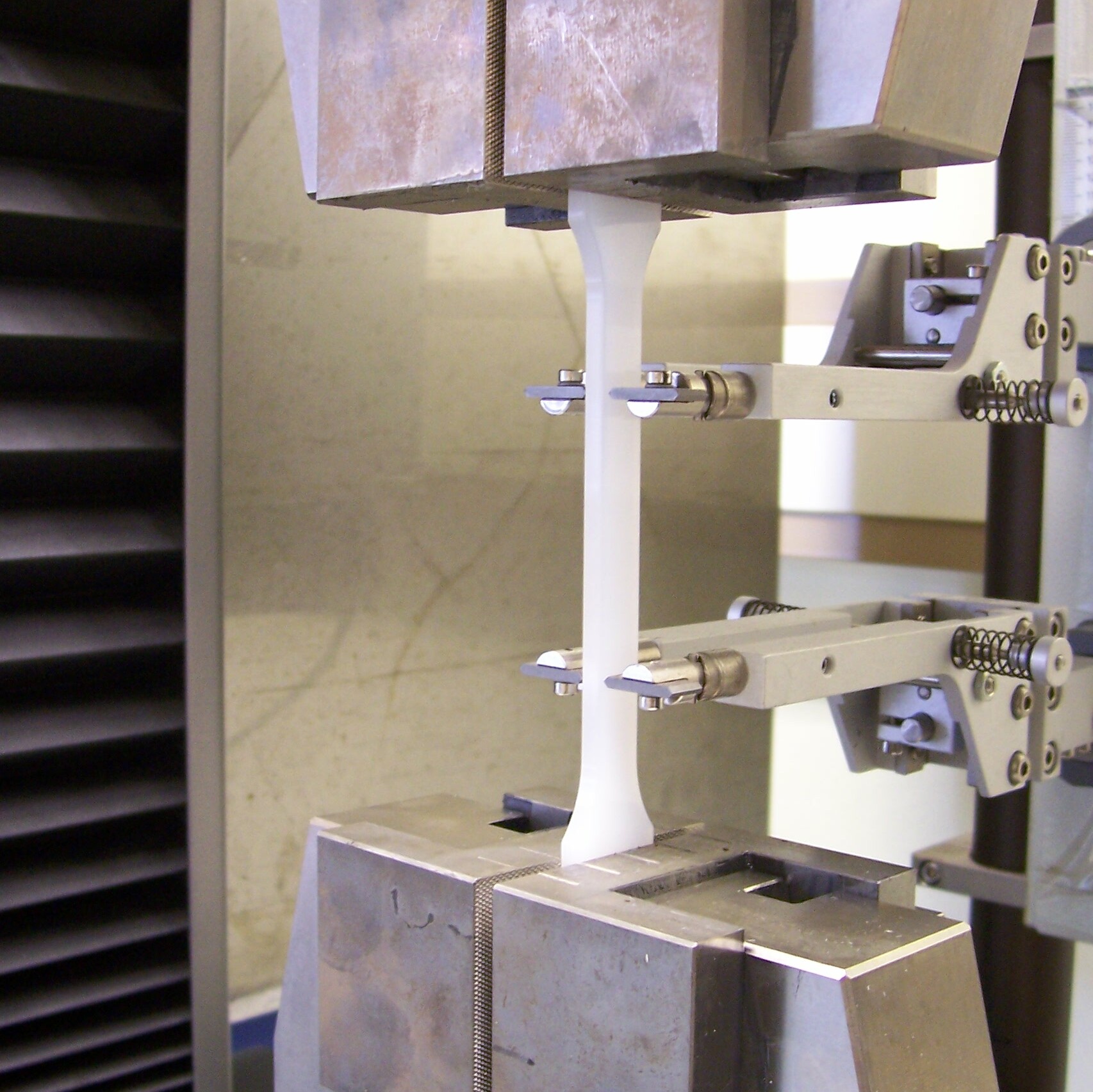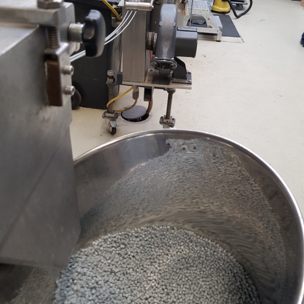Fishing nets are typically made from polyamides as these resins combine easy processing with excellent physical properties. So as to achieve nets with the highest strength, engineers normally select high viscosity polyamides. As they are made from just one resin the nets are straightforward to recycle - back to reusable polymer chip with a ready market in injection molding. However, in order to be efficient, the molding process prefers lower viscosity polymer. This is where BRUGGOLEN® M1417 comes in; its chain cutting action reduces the viscosity to the level desired by the injection molding industry.
Once again Brüggemann has developed the missing link between the fiber net waste stream and the wish to recycle into new injection molded parts. In practice the conversion of used fishing nets into polyamide suitable for injection molding is done via a single step reaction on a polymer compounding line.

BRUGGOLEN® M1417 allows Recycling of High Viscosity Monofilaments Fishing Nets into Injection Molded Parts
Besides the reactive ingredient, the so called “chain cutter”, the right combination of processing additives and the right polymer carrier had to be identified and mixed in an optimum ratio so as to allow reproducible recycling.


Compounding Line recycles PA 6 pellets and Tensile Tester in Brüggemann’s Application Lab
During the development of the BRUGGOLEN® M1417 composition, the team in the application lab conducted many extrusion trials on various compositions. The resulting optimum balance between easy processing of the polyamide on the compounding line and good mechanical properties is now available for our customers as a new polymer additive.
Several customers apply BRUGGOLEN® M1417 successfully whilst making a significant contribution to the circular economy.